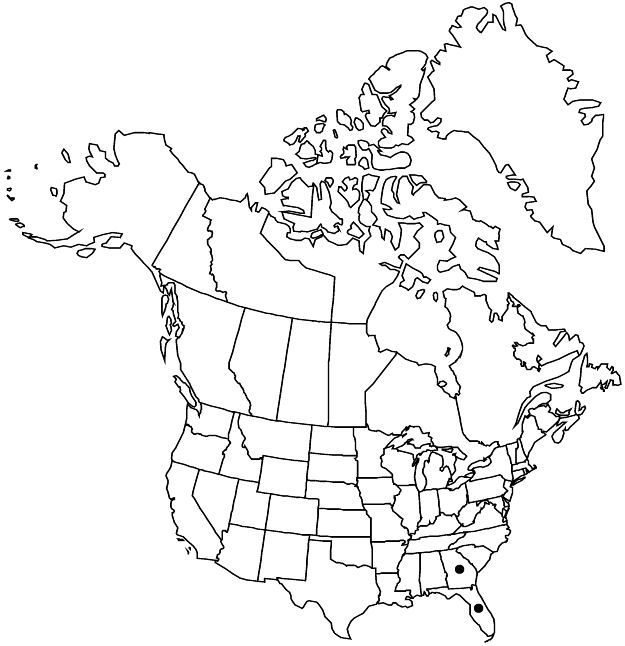Difference between revisions of "Crataegus quaesita"
Biltmore Bot. Stud. 1: 33. 1901.
FNA>Volume Importer |
imported>Volume Importer |
||
| (5 intermediate revisions by 2 users not shown) | |||
| Line 15: | Line 15: | ||
|name=Crataegus resima | |name=Crataegus resima | ||
|authority=Beadle | |authority=Beadle | ||
| + | |rank=species | ||
}} {{Treatment/ID/Synonym | }} {{Treatment/ID/Synonym | ||
|name=C. viaria | |name=C. viaria | ||
|authority=Beadle | |authority=Beadle | ||
| + | |rank=species | ||
}} | }} | ||
|hierarchy=Rosaceae;Rosaceae subfam. Amygdaloideae;Rosaceae tribe Gillenieae;Crataegus;Crataegus sect. Coccineae;Crataegus (sect. Coccineae) ser. Lacrimatae;Crataegus quaesita | |hierarchy=Rosaceae;Rosaceae subfam. Amygdaloideae;Rosaceae tribe Gillenieae;Crataegus;Crataegus sect. Coccineae;Crataegus (sect. Coccineae) ser. Lacrimatae;Crataegus quaesita | ||
| Line 43: | Line 45: | ||
-->{{#Taxon: | -->{{#Taxon: | ||
name=Crataegus quaesita | name=Crataegus quaesita | ||
| − | |||
|authority=Beadle | |authority=Beadle | ||
|rank=species | |rank=species | ||
| Line 58: | Line 59: | ||
|publication year=1901 | |publication year=1901 | ||
|special status=Endemic | |special status=Endemic | ||
| − | |source xml=https:// | + | |source xml=https://bitbucket.org/aafc-mbb/fna-data-curation/src/2e0870ddd59836b60bcf96646a41e87ea5a5943a/coarse_grained_fna_xml/V9/V9_1069.xml |
|subfamily=Rosaceae subfam. Amygdaloideae | |subfamily=Rosaceae subfam. Amygdaloideae | ||
|tribe=Rosaceae tribe Gillenieae | |tribe=Rosaceae tribe Gillenieae | ||
Latest revision as of 23:53, 5 November 2020
Shrubs or trees, 20–50 dm, branches strongly weeping (moving in slight wind). Stems: twigs: new growth ± densely appressed-white-pubescent, 1-year old gray-brown to purple-brown, older gray, ± slender; thorns on twigs usually present, straight, 1–2-years old purple-brown to gray, ± fine, 1–2 cm. Leaves: petiole length 15–20% blade, densely pubescent, glandular at least young; blade narrowly to broadly cuneate to obtrullate, 1.5–3 cm, ± stiff or ± floppy, base ± cuneate, lobes 1 or 2 per side, subterminal, small, lobe apex acute, on extension shoots often deeply incised, margins entire, sometimes obscurely crenate-serrate apically, gland-dotted young, veins 1–4 per side (narrowly diverging, exiting beyond widest part of leaf), apex acute to subacute, abaxial surface slightly pubescent, glabrescent, veins conspicuously pubescent, adaxial often densely pubescent at first, glabrescent, veins sparsely pubescent. Inflorescences 1–3(or 4)-flowered; branches densely appressed-white-pubescent; bracteoles linear, margins sessile-glandular, adaxially short-pubescent. Flowers 10–13 mm diam.; hypanthium white-pubescent; sepals narrowly triangular, 4 mm, margins glandular, abaxially sparsely pubescent; petals elliptic or ± circular; anthers cream; styles 3 or 4. Pomes usually reddish orange to red, suborbicular, 8–10 mm diam., glabrescent to pubescent; sepal remnants none or reflexed; pyrenes 3 or 4(or 5).
Phenology: Flowering Mar–Apr; fruiting Jul–Aug.
Habitat: Scrub on sandy soil
Elevation: 0–100 m
Discussion
Crataegus quaesita is common in north-central Florida. The protologue by Beadle describes the anthers as purple, not seen since. The species is distinguished by narrow, more or less obtrullate leaves with a couple of more or less sharp lobes distally. The C. viaria form, somewhat like a very elongated C. egens, has less sharp lobes. Crataegus laxa, a form with very little terminal lobing, forms a link with the C. vicana form of C. condigna. Crataegus meridiana (subser. Robustae) is another similar form but more robust and with larger flowers.
A striking local form, mainly from near Jacksonville, Florida, and from adjacent Georgia, is probably distinct. Its mature leaves, 2–3 cm, are much more sharply lobed and sharp-tipped than in Crataegus quaesita; the leaves at anthesis are unusually small, only 1 cm, because they are very little expanded (in C. quaesita the leaves then are nearly full size). The plant is very thorny, the extension-shoot leaves are 3 cm wide, more or less isodiametric, with deep, narrow sinuses, presenting a C. marshallii-like appearance.
Selected References
None.
